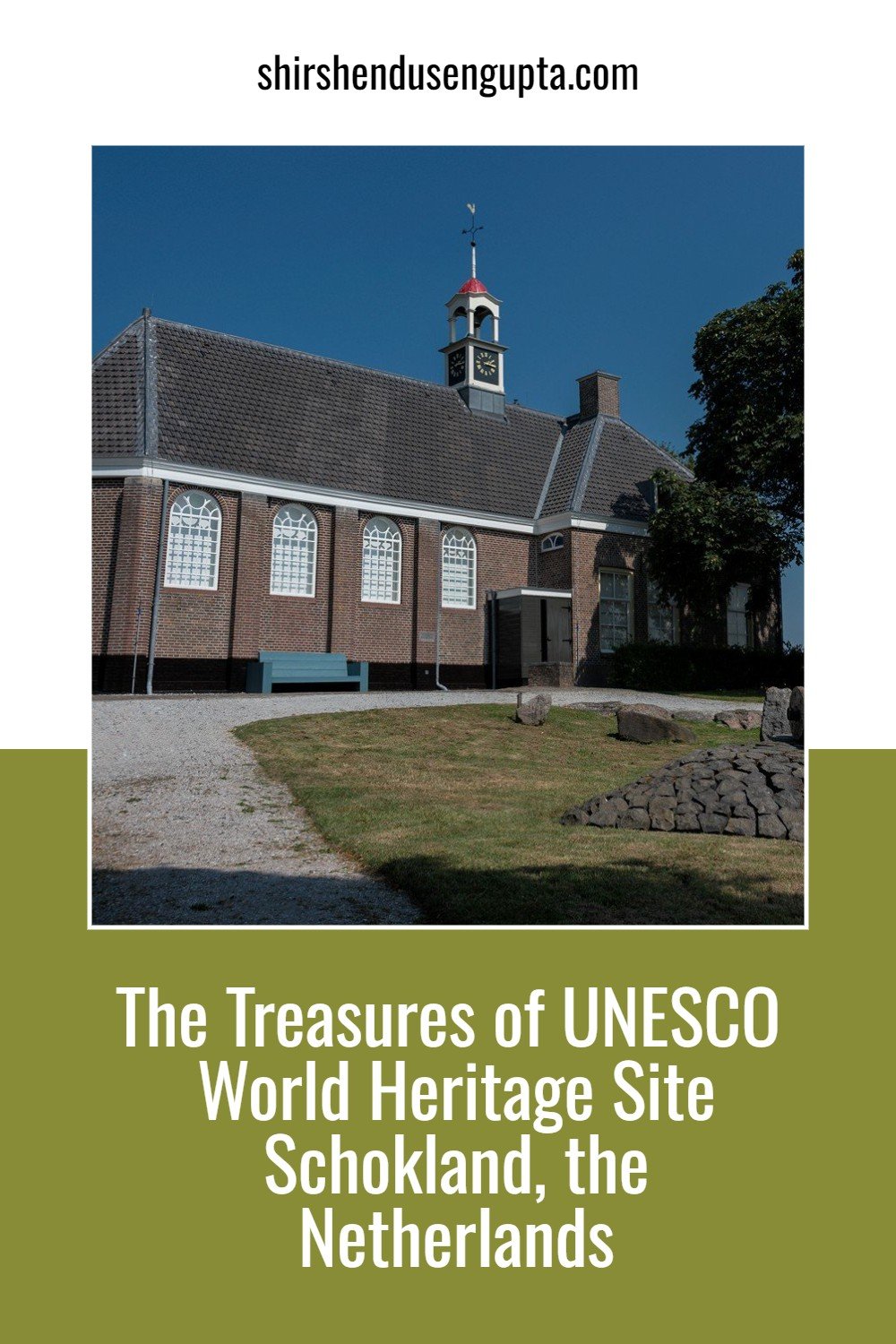Visiting Stonehenge | A Complete Guide to England’s Most Mysterious Prehistoric Monument | History, Facts, Location, and Map
Prologue
During a magical Christmas, we embarked on an unforgettable adventure, The British Isles in 2 Weeks | 4000 km Road Trip across Great Britain (England, Scotland, Wales) and Ireland (Republic of Ireland, Northern Ireland) from the Netherlands | Itinerary, Tips, and Tricks. What began as a simple plan soon turned into one of the most extraordinary journeys of our lives - a blend of coastal drives, medieval towns, misty castles, and heartwarming encounters that revealed the true soul of these storied isles. Every mile brought a new landscape, every turn whispered a new story, and every city left behind a piece of our hearts. So, based on our experience, today I’m going to take you along with me on a time travel across the most enigmatic prehistoric monument of England. Let the journey begin!
Welcome to Stonehenge - A Timeless Enigma
Set amidst the rolling plains of Salisbury in the southern English county of Wiltshire, Stonehenge stands as one of the world’s most iconic and enduring mysteries. These towering stones, some weighing up to 25 tons, arranged in an almost celestial pattern, continue to fascinate archaeologists, historians, and travelers alike. As much as it is a monument to ancient engineering, it is also a spiritual and symbolic landscape that holds stories spanning thousands of years.
Designated a UNESCO World Heritage Site in 1986, Stonehenge draws more than a million visitors annually. Many come not only to marvel at the architecture but to connect with the mythology, rituals, and cosmic alignment that this ancient stone circle embodies. Located just over 90 minutes from London, Stonehenge makes for a perfect day trip or a central stop in a historical tour of southern England.
Theories and Mysteries Behind Stonehenge
Despite centuries of research, the true purpose of Stonehenge remains elusive. From celestial observatory to burial ground, from healing site to Druid temple, many theories attempt to unlock its secrets. Each stone and alignment hints at layers of meaning, making Stonehenge not just a structure but a storybook of ancient knowledge. I’ve listed below the most important theories around Stonehenge’s purpose.
An Astronomical Observatory - Perhaps the most widely accepted theory is that Stonehenge served as an ancient astronomical observatory. The stones are famously aligned with the summer and winter solstices, particularly the Heel Stone, which lines up perfectly with the sunrise on midsummer’s day. When standing in the center of the circle and looking northeast through the entrance, the sun rises directly over the Heel Stone on the longest day of the year. Similarly, during the winter solstice, the sun sets in alignment with the central axis of the monument. This indicates that the builders may have used Stonehenge as a calendar, tracking seasonal changes critical for agriculture and ritual.
A Burial Ground - Excavations have revealed that Stonehenge was also used as a burial site, particularly during its earliest phases. Over 50,000 cremated bones of 63 individuals have been found in the Aubrey Holes, dating back to around 3000 BCE. This suggests that the site held significance as a funerary monument before the stones were erected. Later burials have also been discovered, supporting the theory that Stonehenge was a sacred landscape of the dead, possibly honoring the elite or priestly classes.
A Healing Center - In recent years, some archaeologists have proposed that Stonehenge may have been a place of healing. This theory is largely based on the presence of bluestones, which were brought all the way from the Preseli Hills in Wales, nearly 150 miles away. Ancient peoples may have believed these stones held magical or curative powers, and evidence shows that people with illnesses or injuries traveled great distances to the site. Burial remains show signs of trauma and deformity, suggesting they came to Stonehenge seeking a cure, making it something akin to a prehistoric Lourdes.
A Druid Temple - In the 17th and 18th centuries, antiquarians like John Aubrey and William Stukeley popularized the idea that Stonehenge was a Druid temple, built by the Celtic priesthood for ceremonial purposes. While Druids did conduct rituals at the site in later periods, modern archaeology has shown that Stonehenge predates the Celtic Druids by at least 2,000 years. Nevertheless, modern-day Druids and Pagans continue to use the site for spiritual ceremonies, especially during the solstices, honoring a tradition of ritual use that spans millennia.
Myths, Legends, and Folklores of Stonehenge
Stonehenge isn’t just a physical structure. It's a canvas for countless legends, myths, and folklore passed down through the ages. I’ve listed below the most prominent of the legends around Stonehenge.
Merlin and the Giants - One of the most enduring legends dates back to the 12th century when Geoffrey of Monmouth claimed that Stonehenge was built by giants in Africa, dismantled in Ireland, and magically transported to Salisbury Plain by Merlin. According to the tale, King Ambrosius Aurelianus wanted a memorial for fallen soldiers, and Merlin chose the stones for their mystical healing properties.
The Devil’s Work - A darker tale tells that the Devil stole the stones from a woman in Ireland and brought them to Salisbury. When a friar caught him in the act, the Devil flung one of the stones at him, which struck him on the heel. That stone supposedly became the Heel Stone, and the spot on it that “bled” was said to be the friar’s blood.
Dancing Maidens and Petrified Giants - Folklore also speaks of the stones as petrified beings. Some say they were dancing maidens turned to stone for reveling on the Sabbath; others believed they were giants turned to stone by ancient Gods.
Modern Mysticism - In modern times, Stonehenge has become a spiritual headquarters for neo-Druids, Pagans, and Wiccans, who gather at the site during the solstices to perform ceremonies and celebrate the cycles of nature. The summer solstice sunrise attracts thousands of visitors every year, turning the ancient monument into a living temple once more.
A Brief History of Stonehenge
The Prehistoric Origins of Stonehenge (8500 BCE)
Long before Stonehenge took its familiar shape, the Salisbury Plain was already a site of spiritual and communal significance. The area around Stonehenge shows signs of human activity as far back as 8000 BCE, during the Mesolithic era, when hunter-gatherers roamed the region. Archaeological discoveries have unearthed pits, wooden structures, and tool fragments, indicating that the location was considered special for millennia before the stones were ever placed. The presence of post holes dating to around 8500 BCE suggests the first construction here may have involved timber rather than stone.
The Phases of Construction (3000 BCE to 1500 BCE)
Stonehenge wasn’t built overnight. In fact, it was constructed in 3 major phases over roughly 1,500 years, between 3000 BCE and 1500 BCE.
Phase 1 (c. 3000 BCE) - A circular ditch and bank enclosure was dug, possibly for ceremonial or funerary purposes. Within this enclosure, Aubrey Holes (56 chalk pits) were dug, potentially to hold timber posts or stones.
Phase 2 (c. 2900 – 2600 BCE) - Wooden posts were erected inside the enclosure. This phase may have marked a shift in the site’s ceremonial or ritual use.
Phase 3 (c. 2600 – 1500 BCE) - The arrival of the Sarsen stones, the large upright stones that define Stonehenge today, occurred during this phase. These were arranged in the famous horseshoe and circle pattern, along with smaller bluestones transported from Wales.
Replica of Neolithic huts placed outside Stonehenge Visitor Center based on archaeological discovery at nearby Durrington Walls, the probable settlement site in use when the large Sarsen stones were being erected around 2600 BCE
Method of Construction
One of the greatest puzzles surrounding Stonehenge is how Neolithic people moved and erected such massive stones using only primitive tools and manpower. Stonehenge features two main types of stones -
Sarsen Stones - These are the largest, weighing up to 25 tons and standing as tall as 30 feet. They are a type of sandstone, quarried from the Marlborough Downs, about 20 miles (32 km) north of Stonehenge. The Sarsen stones were likely dragged overland using wooden sledges and log rollers.
Bluestones - Smaller, but still impressive, the bluestones weigh between 2 to 4 tons and originated in the Preseli Hills in southwest Wales, about 150 miles (240 km) away. The bluestones may have been floated along rivers (the Bristol Avon and River Frome) and dragged overland from there — a journey that would have taken several weeks or even months.
Setting the stones upright was a feat in itself. Builders dug deep holes, placed the stones upright, and backfilled the pits. The horizontal lintels were lifted using timber scaffolding and fitted in place using mortise and tenon joints, showing advanced knowledge of engineering and stone carving. The precision in alignment and construction suggests that these ancient builders were not only strong but also highly skilled engineers, astronomers, and architects.
A sample log roller displayed at the Stonehenge Visitor Center, the likes of which may have been used to transport the Sarsen stones
Stonehenge Through the Ages
Roman Era to Medieval Times
When the Romans arrived in Britain around 43 AD, Stonehenge had already stood for more than a thousand years. Roman artifacts discovered nearby suggest that they visited the site, possibly out of curiosity or religious reverence, but they didn’t alter the structure. The site continued to deteriorate slowly, with stones collapsing or being removed. By the early medieval period, Stonehenge was already a ruin cloaked in mystery. Early Christian writers, puzzled by its origins, attributed its creation to supernatural forces. In the 12th century, chronicler Geoffrey of Monmouth famously wrote in Historia Regum Britanniae that the wizard Merlin had magically transported the stones from Ireland, further embedding Stonehenge in British legend.
Renaissance Curiosity and Antiquarian Study
During the Renaissance, interest in Stonehenge was revived. Antiquarians like John Aubrey and William Stukeley began mapping and documenting the site in the 17th and 18th centuries. Stukeley was convinced that the Druids built Stonehenge and coined the term “Temple of the British Druids.” Though later disproven, his writings helped popularize the image of Stonehenge as a mystical and sacred site.
19th – 20th Century: Preservation and Archaeology
In the 1800s, growing concern about the monument’s stability led to the first efforts at preservation. In 1883, Stonehenge was legally protected under the Ancient Monuments Protection Act. Then, in 1918, Cecil Chubb, the last private owner, gifted Stonehenge to the nation. The 20th century saw major archaeological excavations, revealing thousands of years of history and unlocking new theories. In 1986, Stonehenge and its surrounding landscape were designated a UNESCO World Heritage Site, acknowledging its global cultural significance.
The 21st Century and Ongoing Discoveries
Even today, Stonehenge continues to evolve as a site of research. In recent decades, ground-penetrating radar, LiDAR, and drone technology have revealed entire hidden landscapes — including nearby timber circles, burial mounds, and even another massive stone monument buried beneath the earth at Durrington Walls. The area is now recognized as part of a vast ritual landscape, stretching miles beyond the circle itself, and redefining our understanding of Stonehenge’s role in ancient life.
Stonehenge in Pop Culture and Global Imagination
Stonehenge isn’t just a prehistoric monument; it’s a cultural icon that continues to fascinate, entertain, and inspire people across the globe. Its enigmatic presence and mysterious past have made it a recurring symbol in literature, art, music, and films for centuries.
From Thomas Hardy’s Tess of the d’Urbervilles, where the monument becomes a symbol of fate and ancient judgment, to Terry Pratchett’s whimsical take in The Discworld series, Stonehenge has served as both a literal and metaphorical backdrop for centuries of storytelling. Poets like William Blake and William Wordsworth also mused on its timelessness, seeing in the stones a bridge between the spiritual and physical world. In music, bands from Iron Maiden to Black Sabbath have referenced Stonehenge, often as a symbol of mysticism and ancient power.
One of the most famous pop culture references comes from the cult classic “This Is Spinal Tap” (1984), where a hilariously undersized Stonehenge model becomes the centerpiece of a rock concert gone wrong, poking fun at the mystery and theatricality associated with the stones. The monument has also featured in major fantasy films like “King Arthur” and “Thor: The Dark World,” reinforcing its image as a gateway between worlds and a setting where history and mythology meet.
Visiting Stonehenge
Opening Hours: Stonehenge is generally open daily from 9:30 AM to 5:00 PM, with extended hours in the summer months. The last entry is typically two hours before closing. Opening times may vary seasonally or due to special events and weather conditions, so it's always best to check the official website before planning your visit. English Heritage, which manages the site, also adjusts opening hours during solstices or maintenance. Arriving early in the day helps beat the crowds and ensures ample time to explore both the stone circle and the visitor center’s exhibits.
Address: Stonehenge is located at Amesbury, Wiltshire, SP4 7DE, United Kingdom, in the heart of the Salisbury Plain. Set amidst the rolling fields of southern England, it’s situated around 2 miles west of Amesbury and 8 miles north of Salisbury. The site is well-signposted and easily accessible via main roads. When entering the address into a GPS or navigation app, it's helpful to specify the visitor center, as direct access to the stone circle is not permitted without passing through the main entrance. The surrounding landscape also features other Neolithic and Bronze Age monuments.
GPS Coordinates: The GPS coordinates for the Stonehenge Visitor Centre, which is the starting point for accessing the monument, are approximately 51.1839° N, 1.8585° W. These coordinates will guide you directly to the designated parking area and entrance. The stone circle itself lies about 1.5 miles (2.4 km) west of the visitor center and is accessed via shuttle or footpath. If you're navigating without a specific address, entering these coordinates ensures a smooth and accurate arrival, especially when traveling from rural or less signposted routes in the Wiltshire countryside.
Parking: There is ample parking available at the Stonehenge Visitor Centre, which is free for ticket holders. Upon arrival, visitors receive a parking token that they scan upon exit. Oversized vehicles, camper vans, and coaches have designated areas. From the parking lot, it’s a short walk to the visitor center, where you can collect your tickets before proceeding to the stone circle via a 10-minute shuttle bus service or half-hour walking path. It’s advisable to arrive early during peak travel seasons, weekends, or solstice events, as the lot can fill up quickly during those times.
Shuttle bus service from Visitor Center to Stonehenge circle
Public Transport: While Stonehenge is not directly accessible by train, it is well-connected via bus and coach services. The closest major railway station is Salisbury, with frequent trains from London Waterloo and Exeter. From Salisbury, the Stonehenge Tour Bus provides convenient transfers to the site, including admission and audio commentary. Local bus services also run from Amesbury, although schedules can be limited. Public transport is a great option for eco-conscious travelers and those without a car, offering scenic countryside views en route. Tickets for the tour bus can be purchased in advance or at Salisbury Station.
Best time in the year to visit: The best time to visit Stonehenge is during spring (April - June) and autumn (September - October) when the weather is pleasant and the site is less crowded. Summer offers extended daylight hours but attracts the largest crowds, particularly during the summer solstice, a major event celebrated at the stones. Winter visits, especially around the winter solstice, provide a mystical atmosphere and fewer visitors, though the weather can be cold and damp. For photography or a tranquil experience, early morning or late afternoon visits in spring or fall are ideal for dramatic light and peaceful exploration.
Dress Code: While there’s no formal dress code for visiting Stonehenge, it’s recommended to dress comfortably and appropriately for the weather. The site is open and exposed to the elements, so layered clothing, waterproof jackets, and sturdy walking shoes are essential, especially during cooler or rainy months. In summer, bring sun protection like a hat and sunscreen, and in winter, warm coats, gloves, and scarves are advisable. Since the stone circle is about a mile from the visitor center, dress in a way that allows you to enjoy walking the footpaths and exploring the surrounding landscape with ease.
Food and Drinks: The Stonehenge Visitor Centre features a café offering a selection of hot meals, sandwiches, soups, snacks, and beverages. Local produce is often incorporated into the menu, providing a tasty bite before or after exploring the monument. There are also picnic tables available for those bringing their own food. Eating and drinking are not permitted at the stone circle itself to preserve the site's integrity. However, refreshments are readily available at the visitor facilities, and there's a gift shop with food-themed souvenirs and local delicacies. It’s recommended to bring water, especially on warm days.
Photography/Videography: Photography and videography are permitted at Stonehenge for personal use, and visitors are welcome to capture the iconic site from various viewpoints. Tripods and selfie sticks are allowed but should be used with consideration for others. Drones and commercial filming require special permission from English Heritage. The site offers stunning opportunities for both amateur and professional photographers, particularly during sunrise and sunset, when the light casts dramatic shadows over the ancient stones. Flash photography is discouraged at the exhibition areas, and during special access visits, some additional restrictions may apply for preservation reasons.
Accessibility: Stonehenge is accessible to visitors with limited mobility, with designated parking spaces, wheelchair access, and mobility scooters available at the visitor center. A shuttle bus connects the center to the stone circle, and a tarmac path allows easy viewing. The visitor exhibitions, café, and restrooms are fully wheelchair-accessible. Sensory aids, including audio guides, induction loops, and large print materials, are available. The site works to ensure that everyone, regardless of ability, can enjoy and appreciate the monument’s significance. It’s advisable to pre-book accessibility services via the official website to ensure the best possible experience.
Pets: Dogs and pets are not allowed within the Stonehenge monument field or visitor center, except for assistance dogs. However, pets are welcome in the visitor car park and designated public access paths near the site. If traveling with pets, it’s best to have a companion remain with the animal while the other visits the stones, or plan a scenic walk along the nearby National Trust trails, where leashed dogs are permitted. Facilities for pets are limited, so always bring your own water and clean-up bags if you choose to explore nearby areas with your furry friend.
Reservations: Advance booking is highly recommended, especially during peak seasons, weekends, and school holidays. Stonehenge operates on a timed-ticket system, allowing for crowd control and a more comfortable experience. Tickets can be purchased through the English Heritage website, and members of English Heritage or National Trust (with Stonehenge access) may enter free but must still reserve a slot. Walk-in tickets are limited and subject to availability. Booking in advance not only secures your preferred time but may also offer discounts. Group tours and educational visits should be arranged ahead of time to ensure smooth entry.
Guided Tours: Stonehenge offers a range of guided tours, from audio guides included with admission to in-depth tours led by archaeologists or expert guides. Audio guides are available in multiple languages and can be downloaded as an app or rented onsite. For a richer understanding of the monument's history, structure, and alignment, guided walks and special access tours, such as Stone Circle Access visits, provide a more immersive experience, sometimes taking place at dawn or dusk. Many regional and international tour operators also include Stonehenge in their itineraries, often combined with visits to Bath, Avebury, or Windsor.
Website: For the most accurate and up-to-date information, including ticket prices, opening hours, events, and accessibility services, visit the official English Heritage Stonehenge page english-heritage.org.uk/visit/places/stonehenge
Epilogue
Today, in a world dominated by skyscrapers, satellites, and smartphones, Stonehenge stands as a humbling reminder of where we came from, and perhaps, what we’ve forgotten. Built by people without machines or maps, it remains one of humanity’s most awe-inspiring achievements, blending engineering, astronomy, religion, and community into a single monument. Stonehenge’s spiritual significance continues to draw people seeking meaning beyond the material. Whether you're a historian, a photographer, a Druid, or a casual visitor, standing before the towering stones has a quiet, grounding effect. It connects us with something ancient and eternal, something that transcends language or belief. Stonehenge reminds us that not everything can, or should be explained. In an age obsessed with answers, its silence speaks volumes. It teaches us to wonder, to question, and to appreciate the beauty of the unanswered.
Please let us know in the comments below if you enjoyed reading this article. And if you want to read the day-by-day account of our 4000 km road run across all countries of the British Isles during Christmas, please visit our article The British Isles in 2 Weeks | 4000 km Road Trip across Great Britain (England, Scotland, Wales) and Ireland (Republic of Ireland, Northern Ireland) from the Netherlands | Itinerary, Tips, and Tricks. Until then, merry traveling and happy shooting!
Pin the article
Bookmark the article for reading later!
Want to license/buy photos in the article?
License photos for commercial/editorial use or buy photo prints!
Want us to write an article for you?
Articles for magazines, newspapers, and websites!
Watch our Videos
Check out our videos on our Youtube Channel!
Join the Newsletter
Get updates on our latest articles!
We respect your privacy. Read our policy here.































